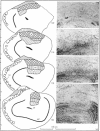Abstract
Bouin-perfused brains of 148 bats (76 species, 48 genera, 8 families) were examined in serial sections for the presence of an accessory olfactory bulb. A moderate to well developed AOB was identified in 26 species. However, absence of an AOB in a particular species does not preclude its presence in some other species of that genus. Descriptions and measurements of the AOBs of each species are reported. The unmyelinated vomeronasal nerve enters the bulb medially and posteriorly. The glomeruli, variable in diameter, appear better circumscribed than previously described. Mitral cells often form thick layers, up to five cells deep, which sometimes reach the dorsolateral surface of the bulb formation. Both external and internal plexiform layers are thin. The latter, however is seen only in a few species. The internal granular layer, reaching the ventricular ependyma in some species, is a prominent component of the bulb. The pars dorsalis of the lateral olfactory tract usually courses between the mitral and internal granular layers. The chiropteran AOB does not differ in significant detail from that of insectivores, primates and other mammals. The occurrence of a functional vomeronasal system in the frugivorous, nectarivorous, and sanguivorous Phyllosotomatidae points to a primary functional role of this system in feeding strategy, at least in bats.
Full text
PDF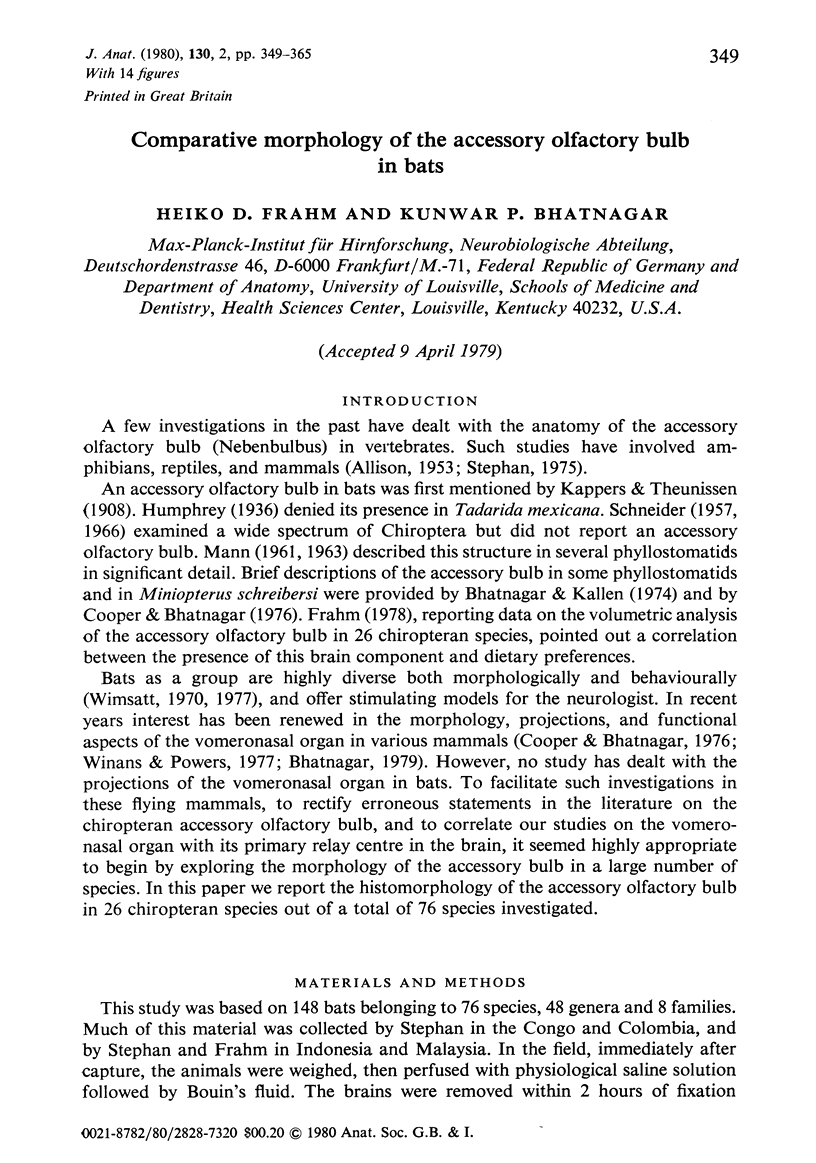
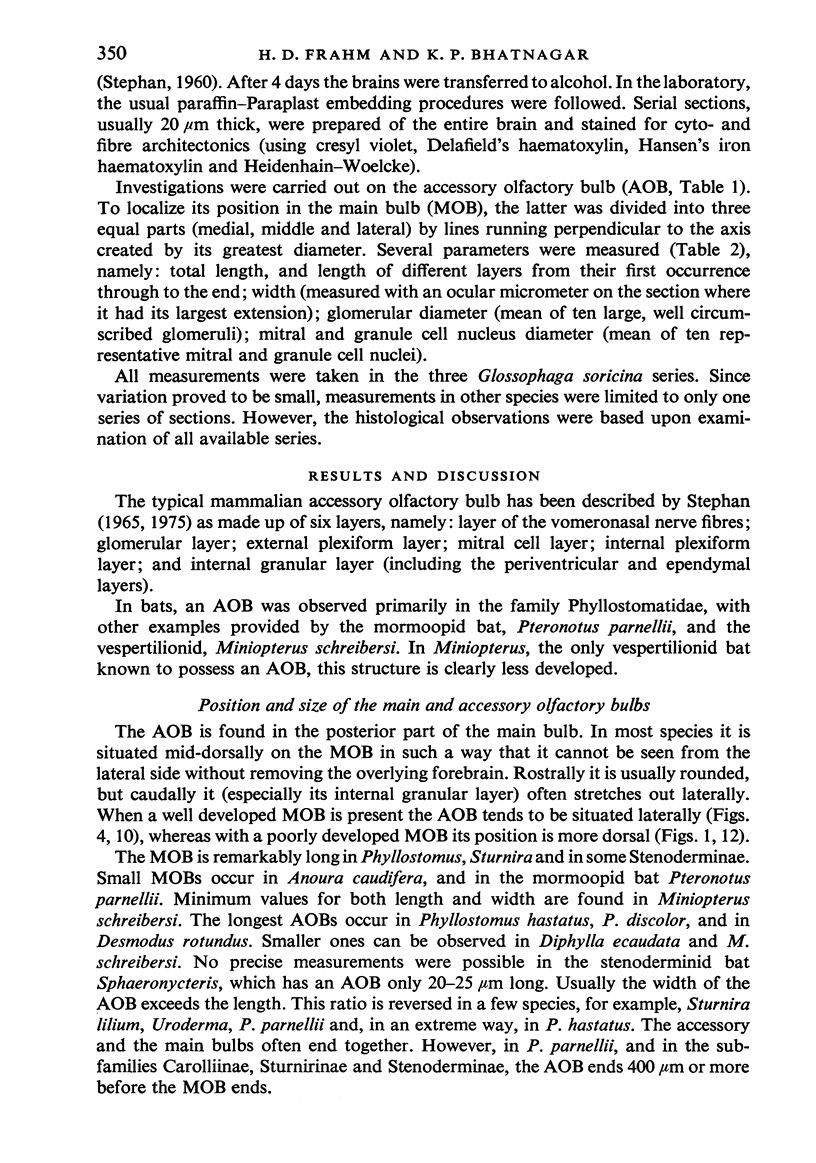
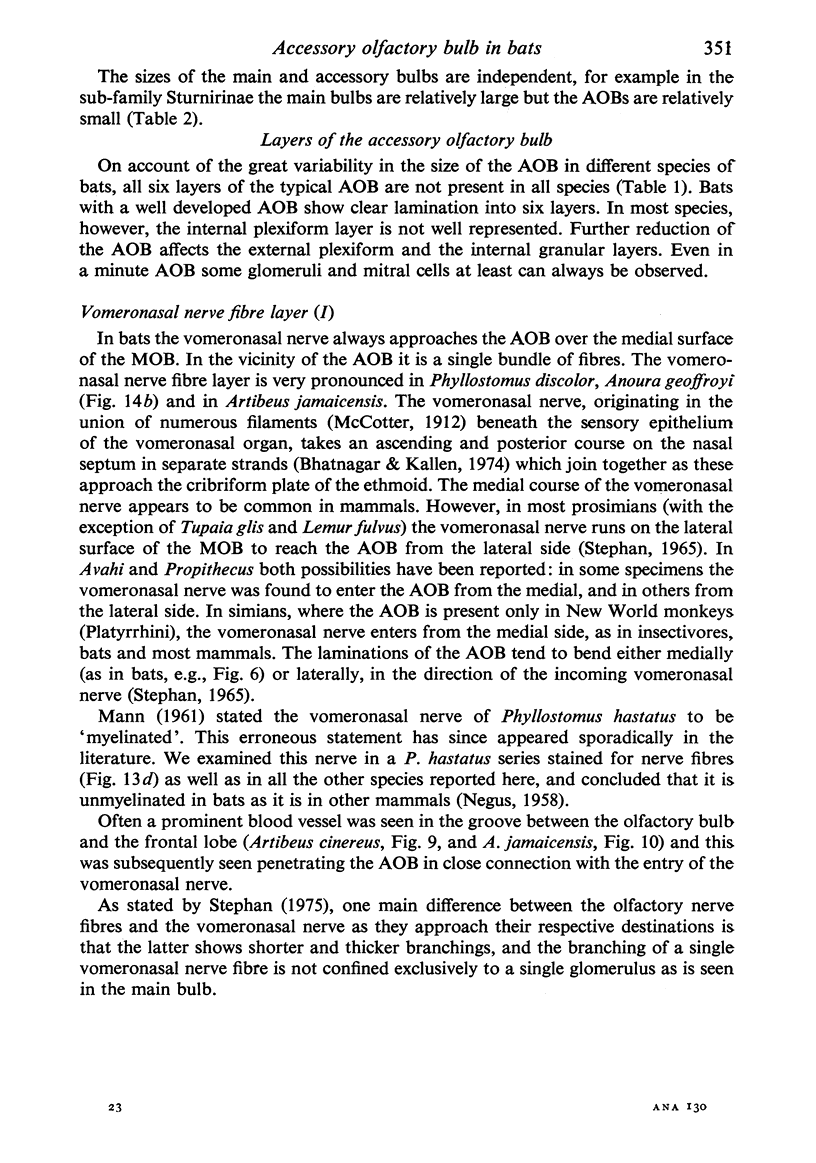
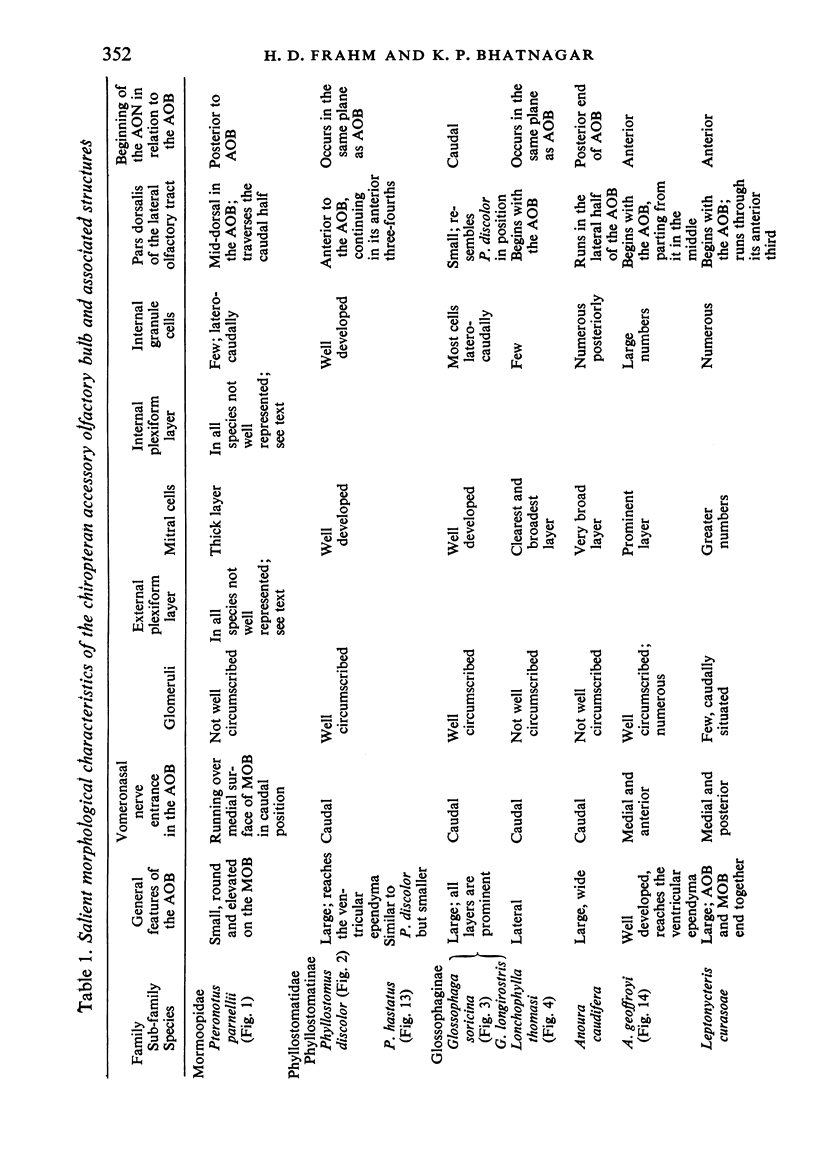
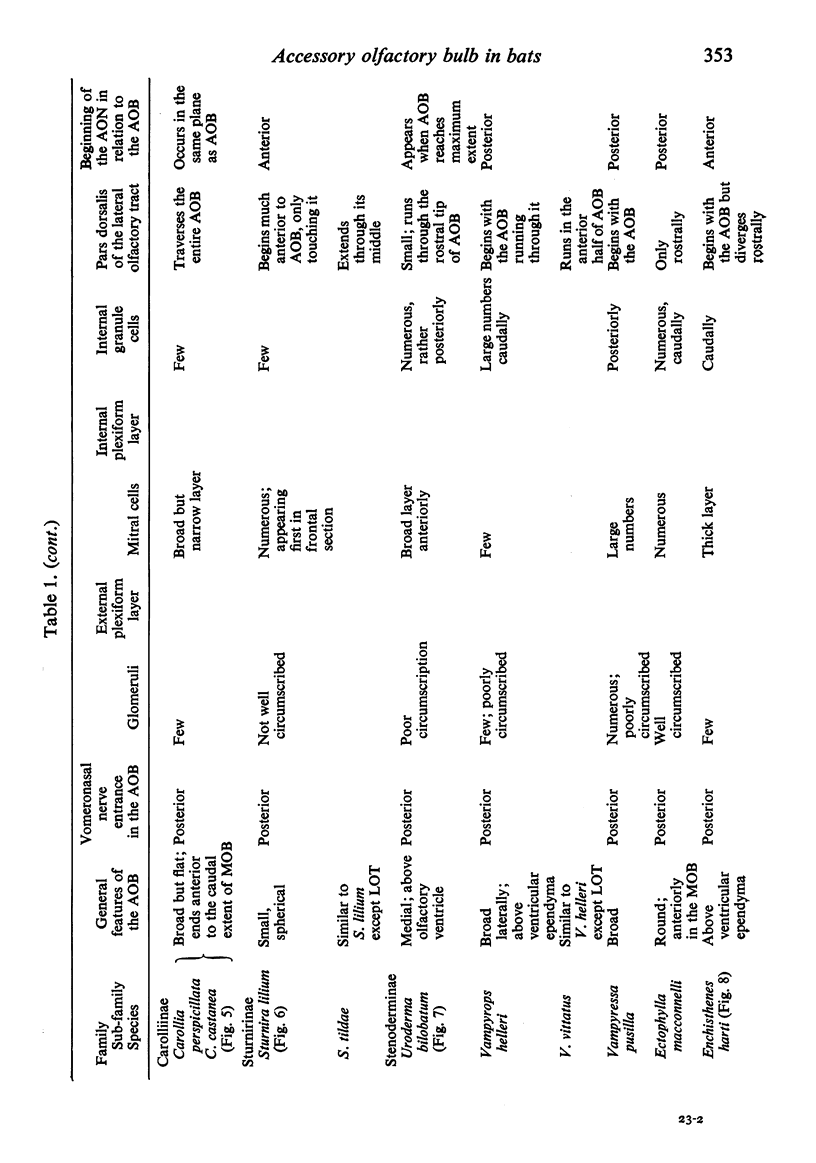
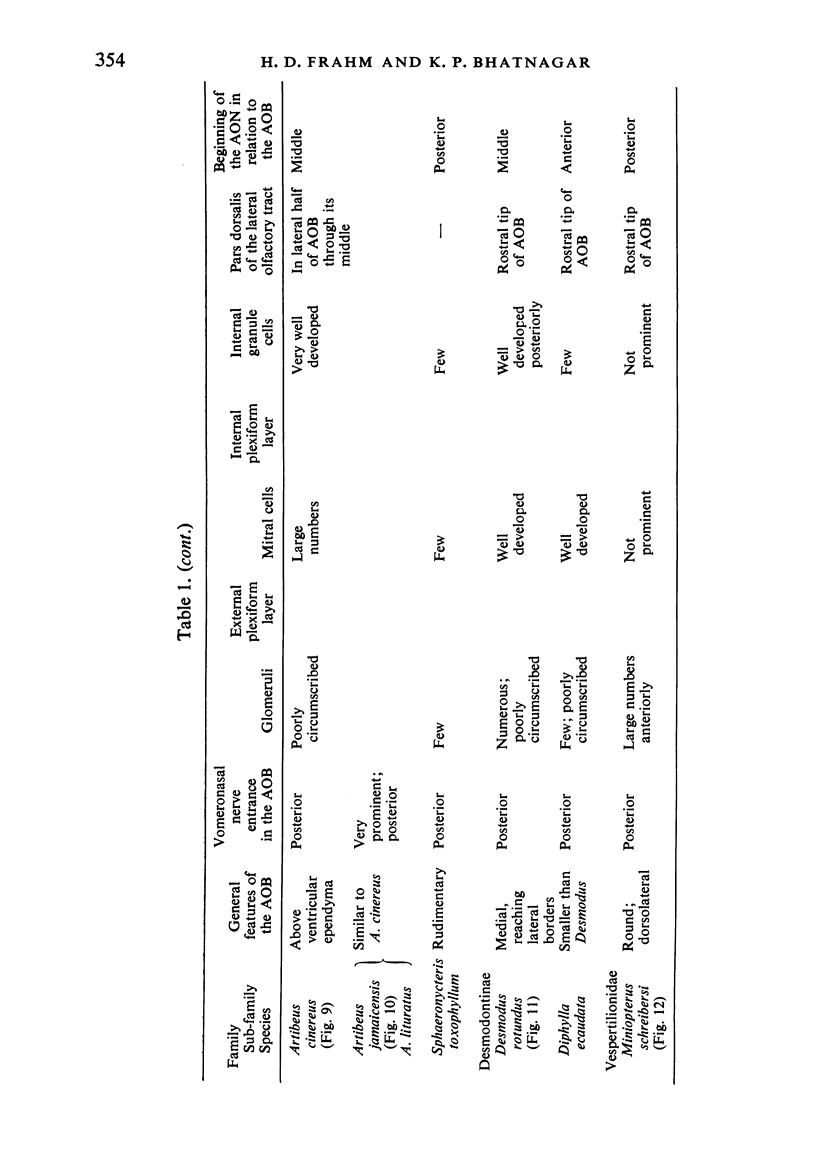
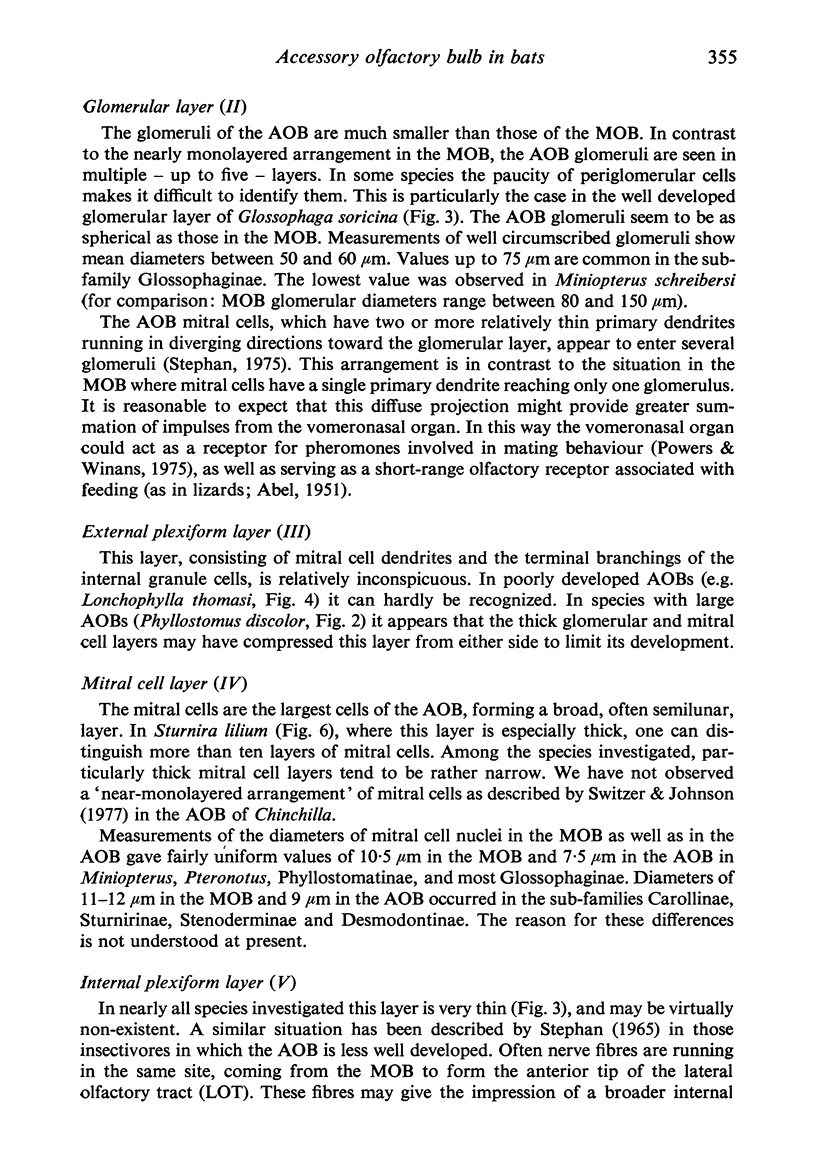
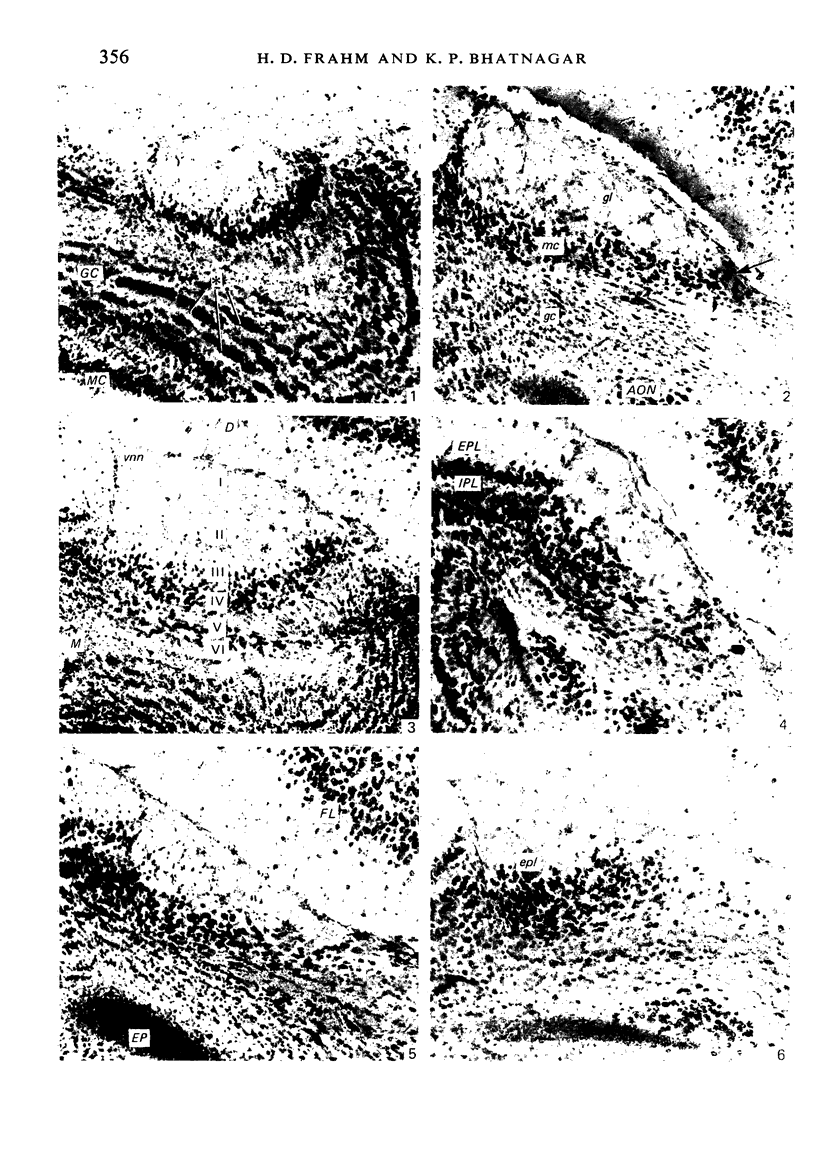
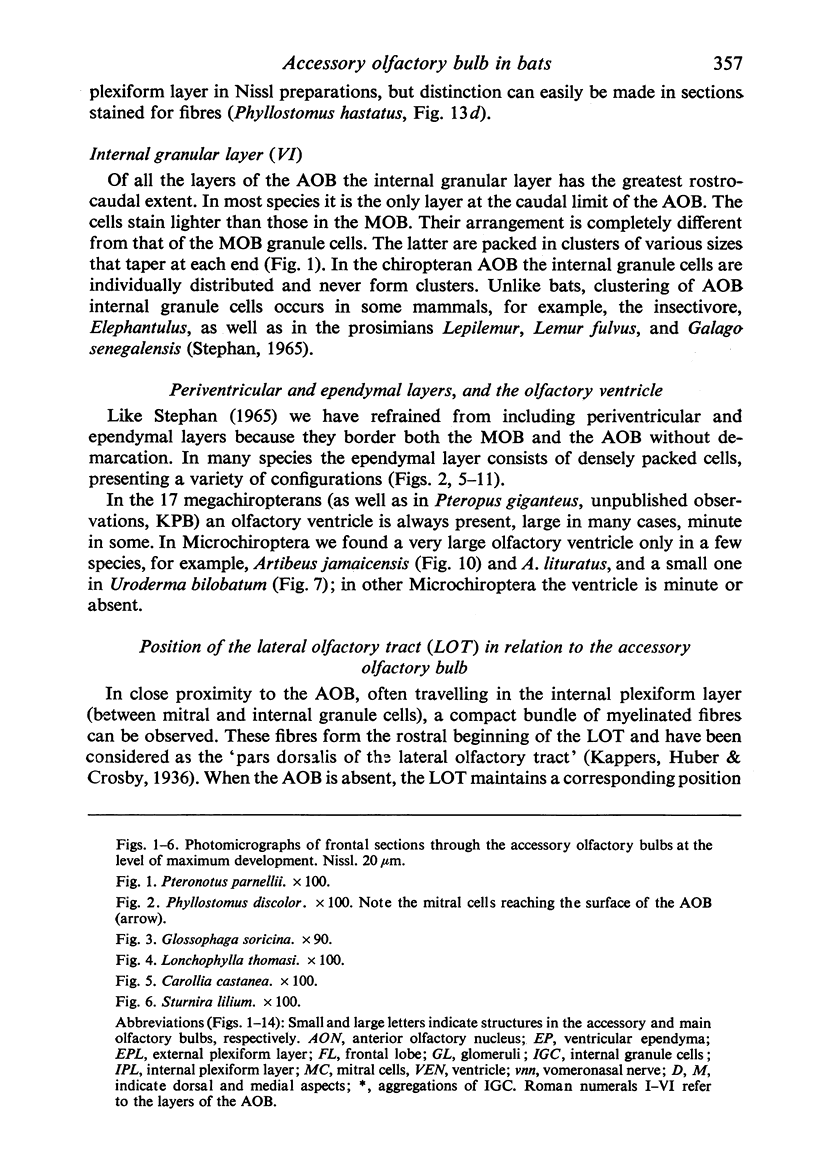
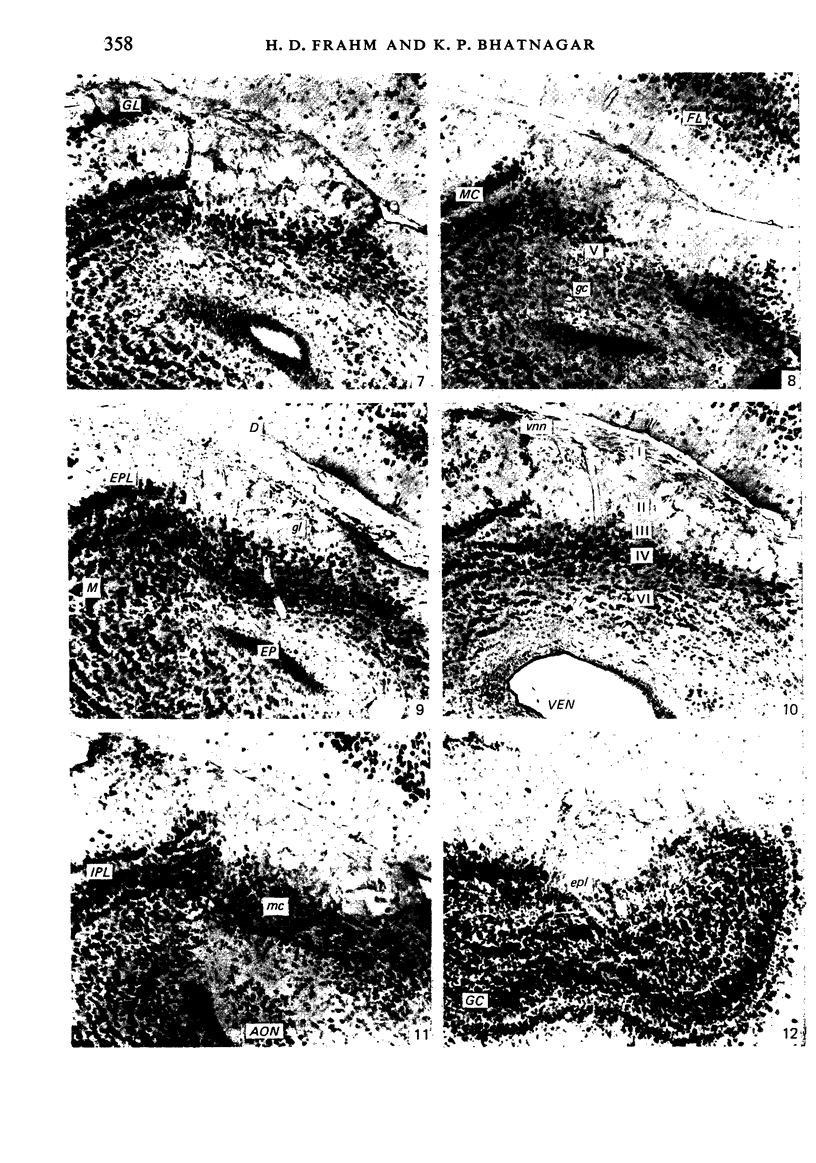
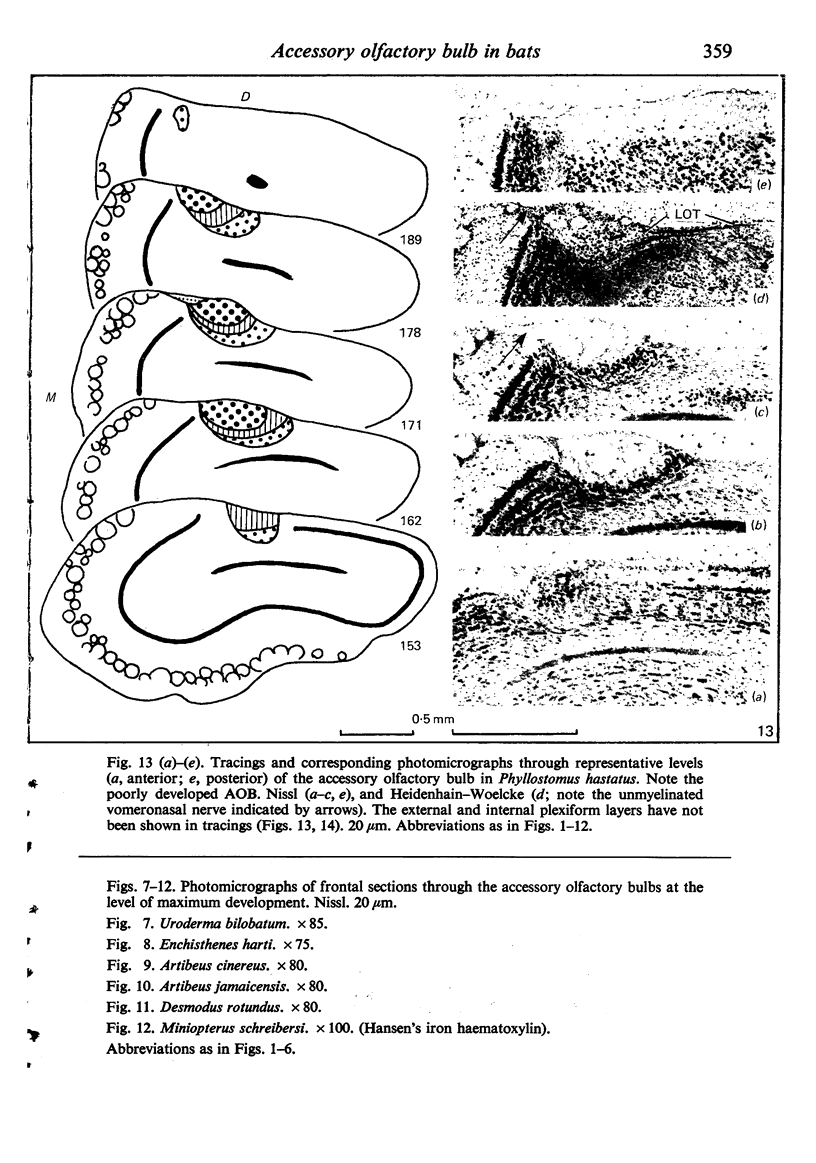

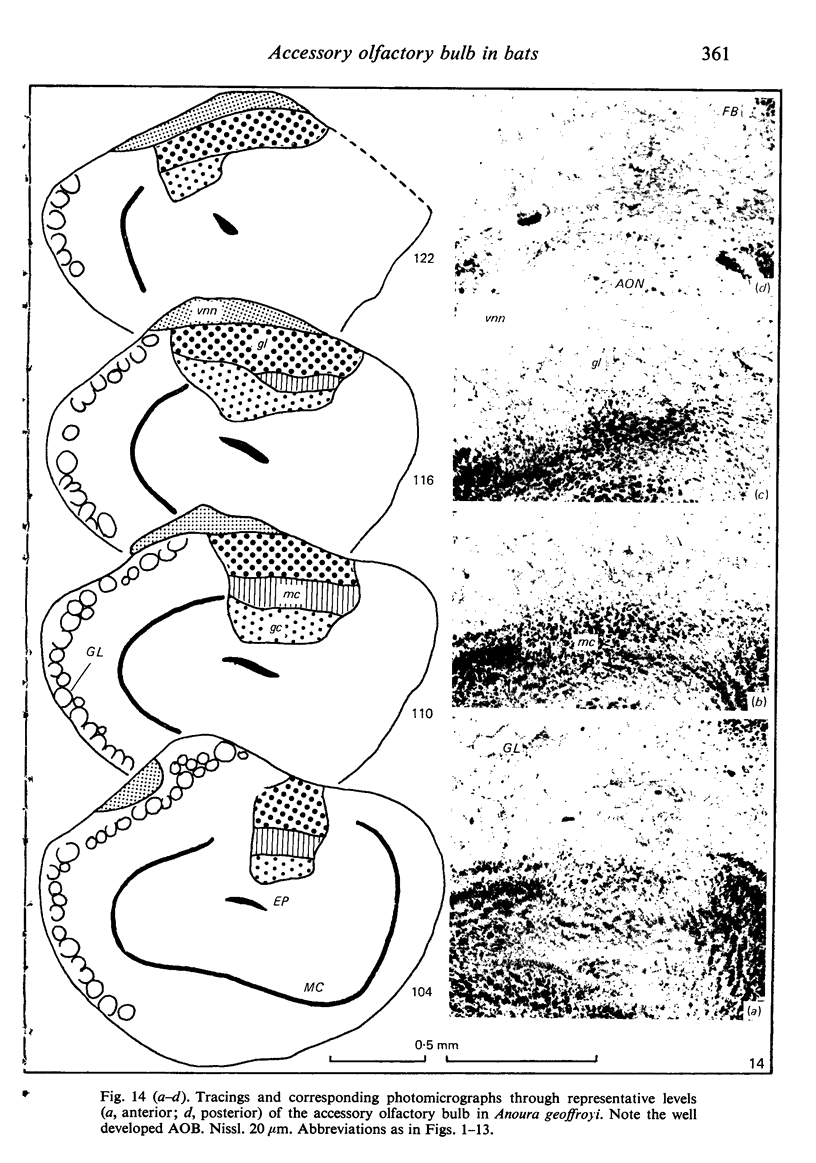
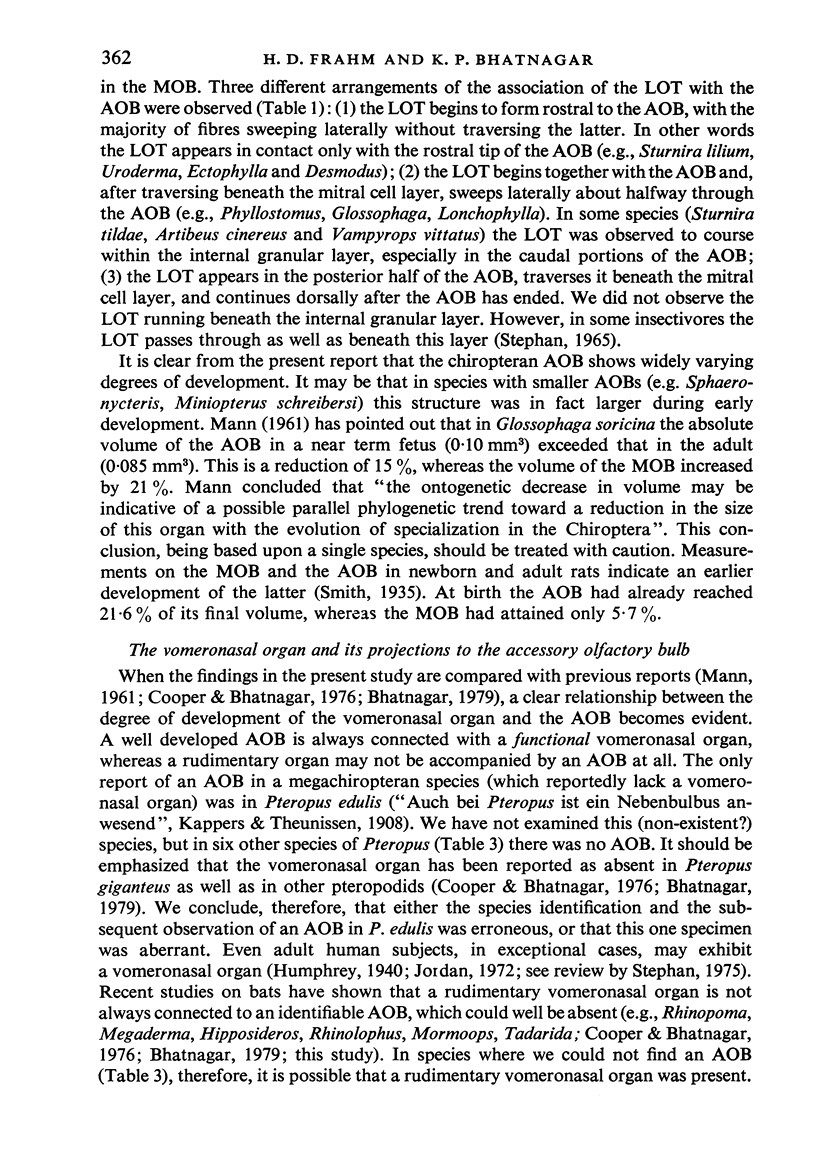
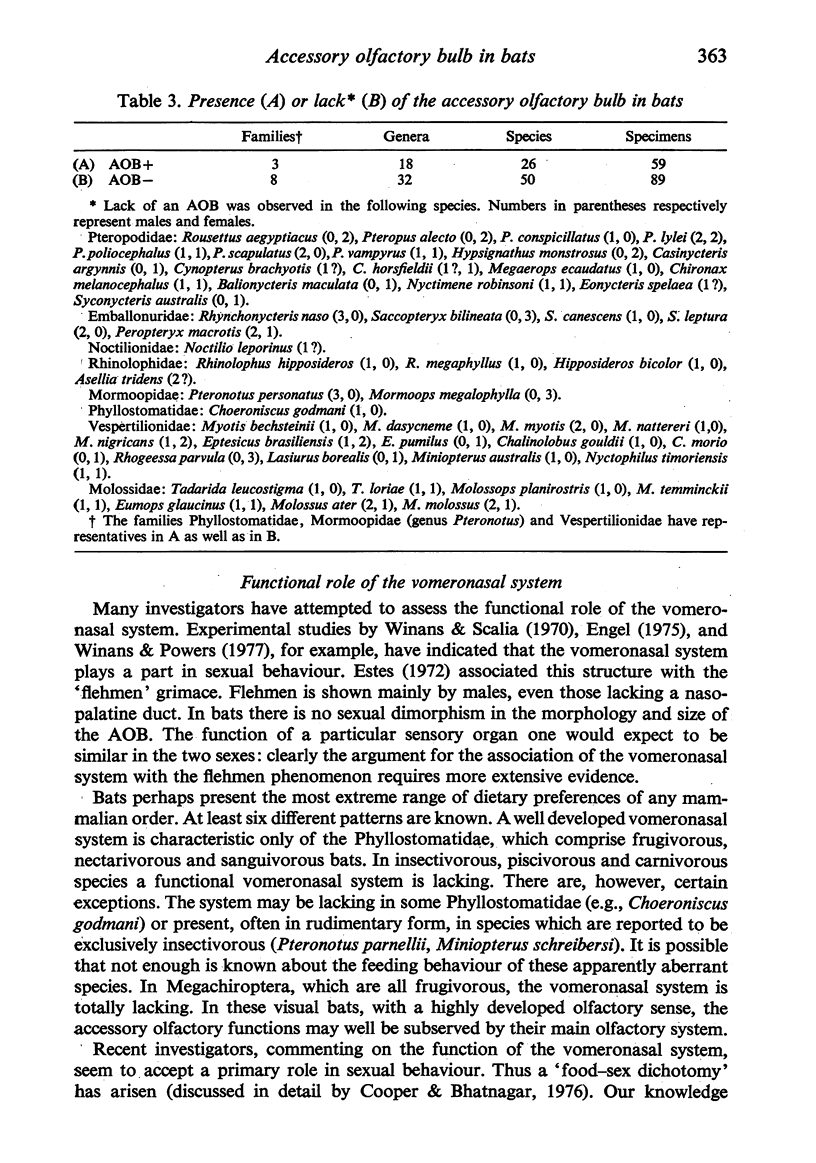

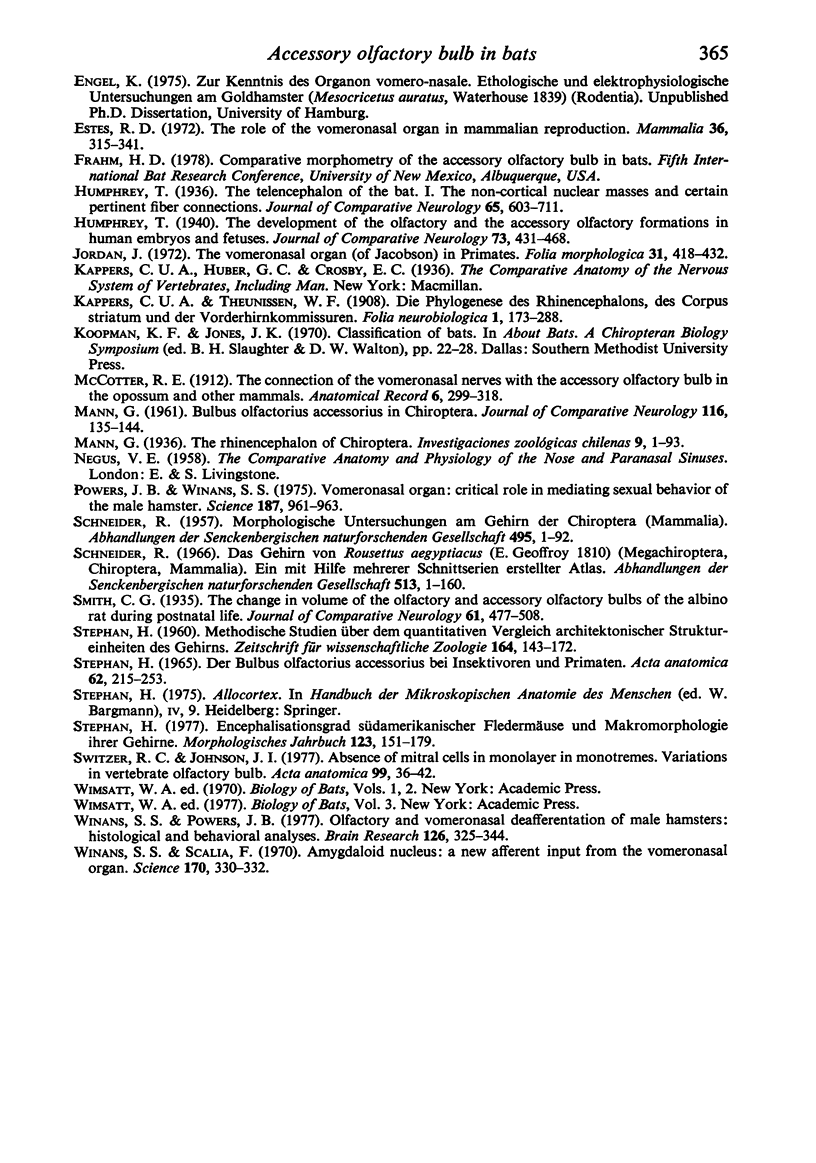
Images in this article
Selected References
These references are in PubMed. This may not be the complete list of references from this article.
- Bhatnagar K. P., Kallen F. C. Morphology of the nasal cavities and associated structures in Artibeus jamaicensis and Myotis lucifugus. Am J Anat. 1974 Feb;139(2):167–189. doi: 10.1002/aja.1001390203. [DOI] [PubMed] [Google Scholar]
- Cooper J. G., Bhatnagar K. P. Comparative anatomy of the vomeronasal organ complex in bats. J Anat. 1976 Dec;122(Pt 3):571–601. [PMC free article] [PubMed] [Google Scholar]
- MANN G. Bulbus olfactorius accessorius in Chiroptera. J Comp Neurol. 1961 Apr;116:135–144. doi: 10.1002/cne.901160204. [DOI] [PubMed] [Google Scholar]
- Powers J. B., Winans S. S. Vomeronasal organ: critical role in mediating sexual behavior of the male hamster. Science. 1975 Mar 14;187(4180):961–963. doi: 10.1126/science.1145182. [DOI] [PubMed] [Google Scholar]
- Stephan H. Der Bulbus olfactorius accessorius bei Insektivoren und Primaten. Acta Anat (Basel) 1965;62(2):215–253. [PubMed] [Google Scholar]
- Stephan H. Encephalisationsgrad südamerikanischer Fledermäuse und Makromorphologie ihrer Gehrine. Gegenbaurs Morphol Jahrb. 1977;123(1):151–179. [PubMed] [Google Scholar]
- Winans S. S., Powers J. B. Olfactory and vomeronasal deafferentation of male hamsters: histological and behavioral analyses. Brain Res. 1977 May 6;126(2):325–344. doi: 10.1016/0006-8993(77)90729-6. [DOI] [PubMed] [Google Scholar]
- Winans S. S., Scalia F. Amygdaloid nucleus: new afferent input from the vomeronasal organ. Science. 1970 Oct 16;170(3955):330–332. doi: 10.1126/science.170.3955.330. [DOI] [PubMed] [Google Scholar]
















